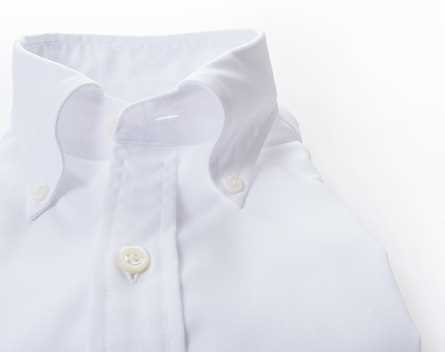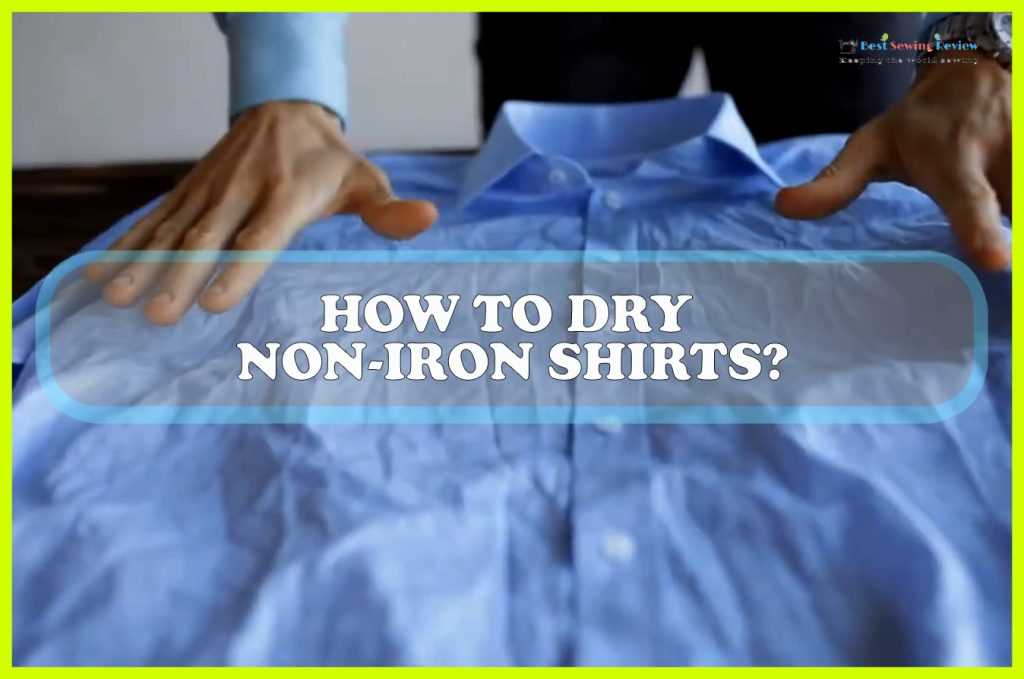




When it comes to laundry, one question that often arises is whether or not it is safe to tumble dry shirts. Tumble drying can be a quick and convenient way to dry your clothes, but it is important to know if this method is suitable for your shirts.
Tumble drying shirts can have mixed results, depending on the type of fabric and the care instructions provided. While some shirts are perfectly fine to be tumble dried, others may shrink, lose their shape, or even get damaged in the process. It is crucial to pay attention to the specific care instructions provided on the label of your shirts.
Generally, shirts made from delicate materials like silk or wool should not be tumble dried, as the heat and movement can cause damage. However, cotton shirts or shirts made from synthetic fabrics are often safe to tumble dry, provided you follow a few guidelines.
To safely tumble dry shirts, it is recommended to use a low or medium heat setting. High heat can cause shrinkage or damage the fabric, so it’s best to err on the side of caution. It is also advisable to remove the shirts from the dryer as soon as they are dry to prevent excessive wrinkles.
Expert tip: If you’re uncertain about tumble drying a particular shirt, it is always better to air dry it to ensure its longevity and maintain its shape.
By following these expert tips and paying attention to the care instructions provided, you can safely tumble dry your shirts without worrying about damaging them. Remember to always check the label for specific guidance, as different fabrics may require different care.
Can You Tumble Dry Shirts?
Tumble drying shirts is a common practice for many people, but is it the best method for all types of shirts? In this article, we will explore whether or not you can safely tumble dry shirts and provide expert advice and tips to help you properly care for your shirts.
1. Check the Care Label

Before deciding to tumble dry a shirt, it is important to check the care label. The care label typically provides instructions on how to properly care for the garment, including whether or not it can be tumble dried. Look for any symbols or text that indicate if tumble drying is safe.
2. Consider the Fabric Type
The fabric type of the shirt also plays a significant role in determining whether or not it can be tumble dried. Certain fabrics, such as cotton and polyester, are generally safe to tumble dry. However, delicate fabrics like silk or wool may require special care and should not be tumble dried.
3. Use the Correct Settings
If the care label and fabric type indicate that tumble drying is safe, it is important to use the correct settings on your dryer. Set the dryer to a low or medium heat setting to prevent excessive shrinkage or damage to the shirt. Additionally, avoid overloading the dryer to ensure that the shirt dries evenly.
4. Remove Shirts Promptly
Once the drying cycle is complete, promptly remove the shirts from the dryer to prevent wrinkling. Hang or lay the shirts flat to cool down and avoid re-introducing moisture. If necessary, use an iron or steamer to remove any remaining wrinkles.
5. Consider Air Drying as an Alternative
If you have any doubts about tumbling drying a shirt or if the care label advises against it, consider air drying as an alternative. Air drying can be a gentle and effective method for drying shirts, especially for delicate fabrics. Simply hang the shirt on a clothesline or lay it flat on a drying rack.
By following these tips and considering the care label and fabric type, you can determine whether or not you can safely tumble dry shirts. Proper care and attention to the specific needs of each shirt will help prolong their lifespan and keep them looking their best.
Expert Advice and Tips
Drying Shirts: Do’s and Don’ts

- Do: Follow the care instructions on your shirt’s label. This will indicate whether it is safe to tumble dry your shirt.
- Do: Use the appropriate heat setting on your dryer. Shirts made of delicate fabrics should be dried on a low heat setting to prevent shrinking or damage.
- Do: Remove shirts from the dryer as soon as they are dry to prevent wrinkling.
- Don’t: Tumble dry shirts that are made of sensitive fabrics, such as silk or wool. These fabrics may require air drying or other specific care methods.
- Don’t: Overload your dryer with too many shirts. This can lead to inefficient drying and increased wrinkling.
Tips for Tumble Drying Shirts
- Sort by fabric type: Separate your shirts based on their fabric type to ensure that you are using the appropriate heat setting for each load.
- Pre-treat stains: If your shirts have stains, pre-treat them before putting them in the dryer. This will help to ensure that the stains do not set in during the drying process.
- Use dryer balls: Adding dryer balls to your load can help to reduce drying time and prevent static cling.
- Check for loose buttons or zippers: Before drying your shirts, check for any loose buttons or zippers. These can cause damage to other garments in the dryer or get tangled in the machine.
- Iron or steam as needed: Even if you tumble dry your shirts, they may still require some touch-up ironing or steaming to remove any remaining wrinkles.
How to Prevent Shrinkage
To prevent shrinkage when tumble drying shirts, follow these tips:
- Check the fabric type: Only tumble dry shirts made of fabric that is safe for machine drying. Fabrics like cotton and polyester are generally safe for tumble drying.
- Use a low heat setting: Set your dryer to a low or medium heat setting to prevent excessive shrinkage.
- Remove promptly: Take your shirts out of the dryer as soon as they are dry. Leaving them in for too long can lead to shrinkage.
- Air dry delicate shirts: If you have delicate shirts made of silk, wool, or other sensitive fabrics, it’s best to air dry them to avoid any potential damage or shrinkage.
| Do’s | Don’ts |
|---|---|
|
|
Proper Care for Shirts
1. Sorting and Preparing

Before washing your shirts, it’s important to sort them by color and fabric type. This will help prevent any color bleeding or damage to delicate fabrics. Additionally, make sure to unbutton any buttons and remove any collar stays or other accessories.
2. Washing
When washing shirts, always check the care instructions on the label. Most shirts can be machine washed, but some may require hand washing or dry cleaning. Use a mild detergent and choose the appropriate wash cycle and water temperature for the fabric.
- For cotton shirts, use the regular cycle with warm water.
- For delicate fabrics like silk or linen, opt for the gentle cycle with cold water.
- If your shirts have stains, pre-treat them with a stain remover before washing.
3. Drying
While some shirts can be tumble dried, it’s best to air dry them to prevent shrinkage and maintain their shape. Hang your shirts on a drying rack or clothesline, ensuring that they are properly spread out to allow air circulation.
If you need to use a dryer, set it to a low heat or delicate cycle. It’s also recommended to put the shirts inside a laundry bag or pillowcase to protect them from any damage caused by tumbling or friction.
4. Ironing and Storing
Once your shirts are dry, you may need to iron them to remove any wrinkles. Follow the fabric’s ironing instructions and use the appropriate heat setting. Always iron shirts inside out to prevent any damage to the fabric or color.
For storing your shirts, fold them neatly and place them in a drawer or on a shelf. Avoid hanging them for long periods as this can stretch the fabric. If you do choose to hang your shirts, use padded or wooden hangers to maintain their shape.
5. Extra Tips
- Read the care instructions on the label carefully and follow them accordingly.
- Avoid using bleach or harsh chemicals, as they can damage the fabric.
- If you notice any stains or spills on your shirt, treat them immediately to prevent them from setting.
- Consider professional dry cleaning for shirts made of delicate or high-quality fabrics.
Benefits of Tumble Drying
Tumble drying your shirts can offer several benefits, making it a convenient and time-saving method for drying your laundry. Here are some advantages of tumble drying:
- Speed: Tumble drying is much faster compared to line drying or air drying. It uses hot air to evaporate moisture from the fabric, allowing your shirts to dry quickly. This can be particularly useful when you need your shirts to be ready for wearing in a short period of time.
- Convenience: Tumble drying eliminates the need for outdoor space or a clothesline. You can simply place your shirts in the dryer and let the machine do the work for you. This can be especially beneficial if you live in an apartment or don’t have access to a yard or balcony.
- Reduced wrinkles: Tumble drying shirts with a low heat setting can help reduce wrinkles. The tumbling action of the dryer helps to loosen and smooth out the fabric, resulting in shirts that require less ironing or steaming.
- Sanitization: Tumble drying at high temperatures can help kill bacteria and dust mites that may be present on your shirts. This is especially important if you or your family members have allergies or sensitivities to allergens. Additionally, tumble drying can help remove any odors that may be trapped in the fabric.
- Softness: Tumble drying with the addition of fabric softener sheets or dryer balls can help soften the fabric of your shirts. This can make them more comfortable to wear, especially for those with sensitive skin.
It is important, however, to always check the care instructions on your shirts before tumble drying, as some fabrics or garments may not be suitable for this method. Additionally, be mindful of using the appropriate heat setting to prevent any damage to your shirts.
Common Mistakes to Avoid
- Overloading the dryer: One common mistake is putting too many shirts in the dryer at once. This can prevent proper airflow and heat distribution, causing the shirts to come out wrinkled or not fully dried.
- Not checking the care label: Always check the care label on your shirts before tumble drying them. Some shirts may not be suitable for tumble drying and could shrink or be damaged in the process.
- Using high heat settings: Using high heat settings can be too harsh for some shirts, especially those made of delicate fabrics. Opt for lower heat settings to prevent any damage or shrinkage.
- Ignoring pre-treatment: Pre-treating any stains or spots on your shirts before tumble drying is important. If you put a stained shirt in the dryer without pre-treatment, the heat can set the stain, making it more difficult to remove later.
- Using dryer sheets or fabric softener: While dryer sheets and fabric softener can make your shirts softer and reduce static, they can also leave residue or build-up on the fabric. This can affect the shirt’s appearance and make it less absorbent over time.
- Not using a drying rack: If you have shirts made of delicate fabrics, it’s best to air dry them on a drying rack instead of using the dryer. This will help maintain the shirt’s shape and prevent any potential damage.
- Leaving shirts in the dryer too long: Leaving shirts in the dryer for an extended period can lead to excessive wrinkling. Remove the shirts as soon as the cycle is finished to minimize wrinkles.
- Not sorting shirts properly: When tumble drying shirts, it’s essential to sort them by fabric type and color. Different fabrics require different drying times and heat levels, and putting dark and light-colored shirts together can cause color bleeding.
By avoiding these common mistakes, you can ensure that your shirts come out of the tumble dryer in the best possible condition, ready to be worn or stored.
Website Name
Welcome to Website Name, your ultimate resource for expert advice and tips on a wide range of topics. Whether you’re looking for advice on home improvement, lifestyle, fashion, or any other subject, we’ve got you covered!
At Website Name, we understand the importance of finding reliable information that you can trust. That’s why our team of experts work tirelessly to research and provide accurate and up-to-date content.
Expert Advice
Our team of experienced professionals are here to answer all of your questions and provide expert advice on a variety of topics. From how to care for your garden, to tips on managing your finances, we have the knowledge and expertise to help you make informed decisions.
Tips and Guides
Looking for practical tips and step-by-step guides? Look no further. Our articles and guides are designed to offer helpful tips and instructions to make your day-to-day life easier. Whether you’re learning how to cook a new recipe, planning a trip, or looking for fashion inspiration, our tips and guides will point you in the right direction.
Interactive Community
Join our interactive community and connect with like-minded individuals who share your interests. Share your own tips and experiences, ask questions, and engage in meaningful discussions. Our community is a valuable resource for finding inspiration, support, and networking opportunities.
Easy Navigation
Our website is designed with user experience in mind. With a clean and intuitive interface, you can easily navigate through our content and find the information you need. Search for specific topics, browse through categories, or explore our curated collections to discover new and interesting content.
Stay Updated

Don’t miss out on the latest tips and advice. Subscribe to our newsletter to receive regular updates directly to your inbox. Stay informed about new articles, upcoming events, and exclusive offers.
Contact Us
If you have any questions, suggestions, or feedback, we’d love to hear from you. Get in touch with our team through our contact form or reach out to us on social media. We value your input and strive to provide the best possible experience for our readers.
Thank you for visiting Website Name. We hope you find our website helpful and informative. Happy browsing!
FAQ
Can you tumble dry shirts?
Yes, you can tumble dry shirts. However, it is important to check the care label on the shirt for specific instructions.
What temperature should I use when tumble drying shirts?
The temperature setting for tumble drying shirts may vary depending on the fabric. It is generally recommended to use a low or delicate heat setting to prevent shrinkage or damage to the shirt.
Is it safe to tumble dry all types of shirts?
No, not all types of shirts can be safely tumble dried. Some delicate fabrics, such as silk or lace, may require special care and should not be put in the dryer. Always check the care label on the shirt for specific instructions.













